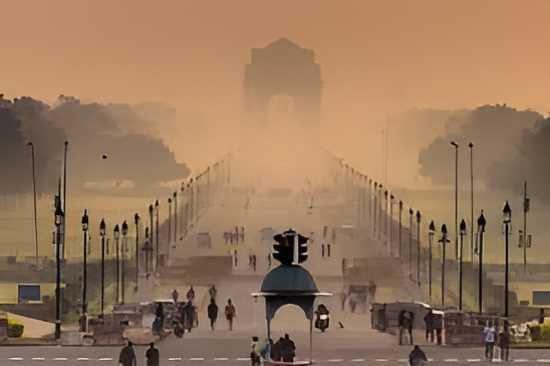Once winter arrives, the air quality of Delhi falls to a poisonous level and risks harming the civilization residing there. It is a chronic issue that results from an interplay of human action, atmospheric conditions, and the rhythm of seasonal weather. All these things may result in an extreme rise in the level of pollution in Delhi. Some of the primary factors are given in detail below:

1. Burning of Crop Residue in Neighboring States
Farmers in neighboring Punjab, Haryana, and Uttar Pradesh states routinely burn crop waste around the Diwali festival every year, leading to bad winter Delhi air quality. Farmers were cleaning residues of harvested crops to prepare the field for the next sowing and would resort to burning them. Nevertheless, as this happens, it produces lots of harmful particulates like carbon monoxide, PM2. 5 and PM10), and other toxic gases. The air quality of Delhi is worse when the smoke combines with the city's pre-existing contaminants.
2. Geographical Impacts
Delhi's pollution issue is also caused by its geographical location. Because it is landlocked, the city does not benefit from coastal breezes that help in removing pollutants. Furthermore, it is highly sensitive to the impacts of stubble burning, mainly in the winter, due to its closeness to agricultural states.
3. Industrial and Vehicles Pollution
Due to heavy traffic and the high population in Delhi, vehicle pollution is one of its main reasons for pollution. Moreover, exhaust gases from car engines consist of soot-grainy particulate matter, nitrogen oxides, and carbon monoxide, among others. In addition, power plants and industrial processes produce even more emissions. It mainly occurs during winter when the heating requirements are higher.
4. Dust and Waste Burning
The Delhi construction industry is largely unregulated and generates a lot of dust, thereby making the air quality of Delhi hazardous. In addition, especially during winter, burning waste outdoors releases harmful gases and small particles into the atmosphere. These pollutants and the stagnant winter weather slow down the city's air quality.
5. Thermal Inversion and Winter Weather Trends
Delhi's pollution levels are greatly increased by the cold winter months. During this time of year, because of thermal inertia, warmer air trends towards hovering above cooler (and more dense) air that tends to ground level. It will hold these contaminants at the surface to stop them from getting into the atmosphere. Moreover, the absence of strong winds at this time contributes to smog buildup. Thus, it may result in a dense, enduring layer of pollution covering the city.
6. Fireworks on Diwali
One more reason behind the problem of pollution in Delhi is the festival of Diwali, which generally falls around the winter season. The celebration in Delhi gets hazardous because of the sudden rise in pollution experienced as a result of the huge use of fireworks. All these activities produce dangerous chemicals and tiny particles. The already declining air quality becomes even worse by the brief spike.
Seeking a Sustainable Solution
The need for a multi-pronged strategy to address the annual air quality crisis in Delhi is clear, but there is an immediate need, that would come in the form of action to encourage environmentally friendly farming practices, better waste management systems, and enforce stricter industry and vehicle emission regulations. Government measures, public awareness, and participation all have a role to play in solving this pressing issue.
In addition, the toxic winter air quality of Delhi is a bitter reminder of the damaging implications of unproductive behavior and the speed of immediate action. You can also monitor the air quality from time to time to see its level. In other words, the city may work towards offering cleaner, healthier air for citizens in years to come with sensible policies and constant efforts.
Read More: How to Clean the National Capital of India from the Pollution?